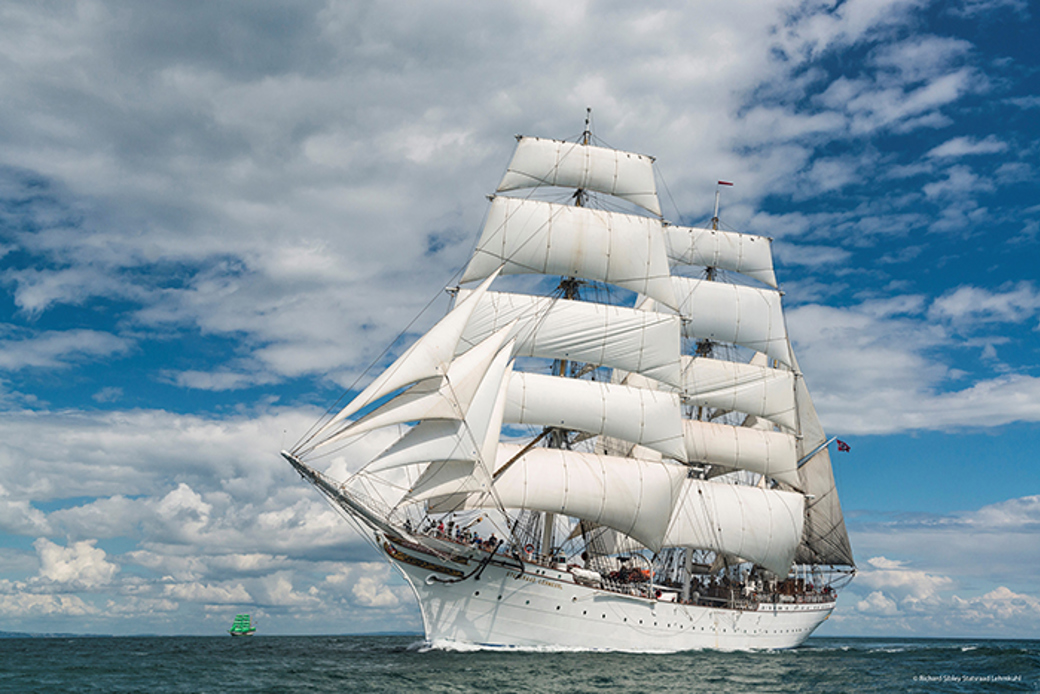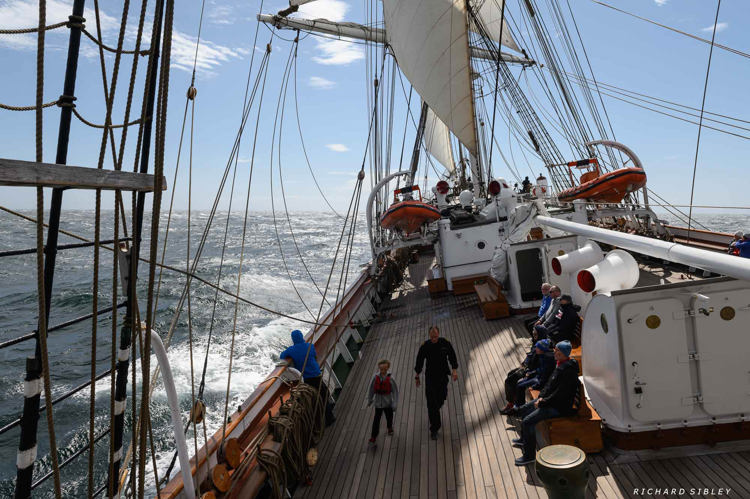
Historic tall ship transformed into ultra-modern green vessel
Kongsberg Maritime’s hybrid system helps to decarbonise ships, including the majestic Statsraad Lehmkuhl. “We have converted a 19th-century vessel into a model of sustainability that supports 21st-century research and education,” says Yrjar Garshol, Vice President of Global Marketing.
Despite industry efforts, international shipping is decarbonising at a snail’s pace. According to the EU, shipping is responsible for 13 per cent of all GHG emissions from the EU transport sector. This figure could increase between 50 and 250 per cent by 2050 under a business-as-usual scenario, undermining the objectives of the Paris Agreement.
To limit the increase in global average temperature to 1.5 °C, global emissions must peak and decline as soon as possible. More green technology is therefore needed to decarbonise vessels more quickly.
Hybrid shaft generator gives vessels zero-emission capability
Kongsberg Maritime has delivered a hybrid system for the Statsraad Lehmkuhl, a majestic 100-year old tall ship. The traditionally rigged vessel is sailing the globe as part of the One Ocean Expedition, a project to promote and study ocean sustainability.

The system includes a shaft generator — a clean source of power on a ship that does not burn fossil fuel to generate power. On the Statsraad Lehmkuhl, the generator works by running the propeller while the ship is under sail, providing enough power to recharge the ship’s 370 kWh battery bank. The stored energy is then used to run the ship’s propeller when the winds subside and the sails no longer provide enough forward motion, as well as to power the ship’s instruments, lights and galley.
“The Statsraad Lehmkuhl puts a unique twist on our hybrid system. Since the tall ship sails with traditional masts, our innovation harnesses the energy created by the ship moving through the water on wind power alone and stores it in the battery bank for later use,” explains Garshol.
“We can run the ship for hours at a time on the charged batteries, making the ship emission-free at certain times,” he adds.
Making huge leaps towards decarbonisation
Kongsberg Maritime’s green technology has helped to keep the Statsraad Lehmkuhl in productive use since 1981. The company has previously installed green propulsion and power equipment, as well as Vessel Insight, a digital solution for energy management, fuel consumption optimisation and communication. The result is lower emissions, less fuel consumption and reduced operational costs.
Modern commercial ships see similar benefits. Ferries, cruise ships and offshore service vessels can use the extra battery power to boost their engines when needed, and they can turn their engines down or off to reduce emissions and noise pollution near ports and offshore installations.
“By integrating our various green solutions, including our hybrid system, we can reduce ship emissions by up to 25 per cent. This is significant as the deadline to mitigate climate change closes in,” says Garshol.
“One way of accelerating the green shift in shipping is to modify current vessels,” he adds. “Converting old tonnage instead of building new vessels could be a sustainable alternative.”
Emissions regulations pressuring the industry
International regulations are forcing ships to quickly reduce their carbon footprint. Most notably, the International Maritime Organization (IMO) is requiring all ships to cut their carbon intensity by at least 40 per cent by 2030. Only one-third of all ships meet the IMO’s target today, leaving 70 000 vessels as a potential market for Kongsberg Maritime’s green technology.
As for the Statsraad Lehmkuhl, Kongsberg Maritime’s long-standing sponsorship of the tall ship has been instrumental to its mission. “The excellent cooperation we have had with Kongsberg has been crucial to our vessel now being the greenest sailing ship in its class,” said Haakon Steinar Vatle, General Manager of the Statsraad Lehmkuhl Foundation. “We look forward to implementing further sustainable technologies on board, in collaboration with Kongsberg Maritime.”

The 107-year-old tall ship has become a state-of-the-art research vessel. Foto: Richard Sibley
This article was first published at http://www.theexplorer.no, the official marketplace for green and sustainable technology from Norway.
